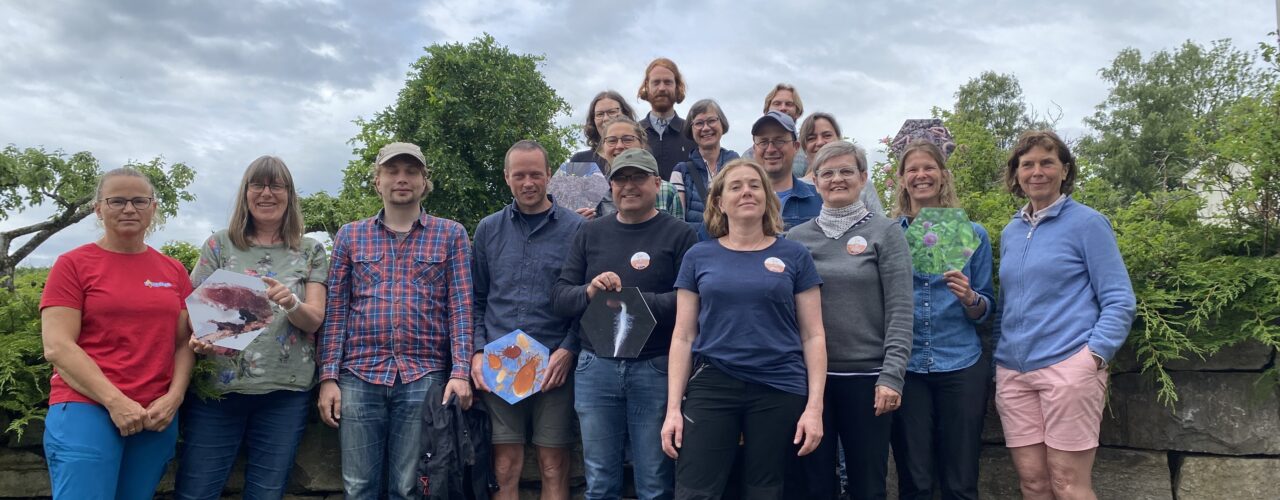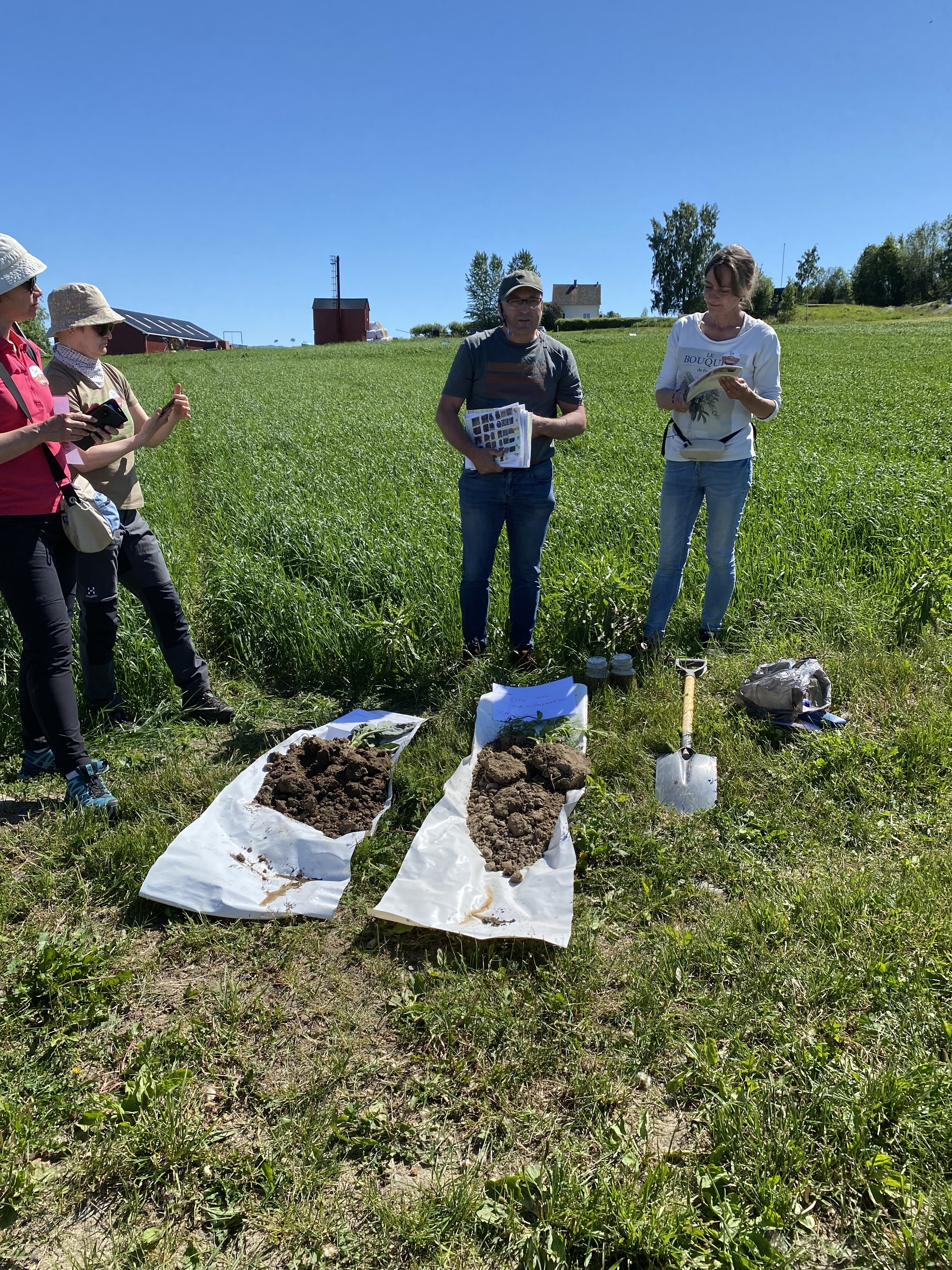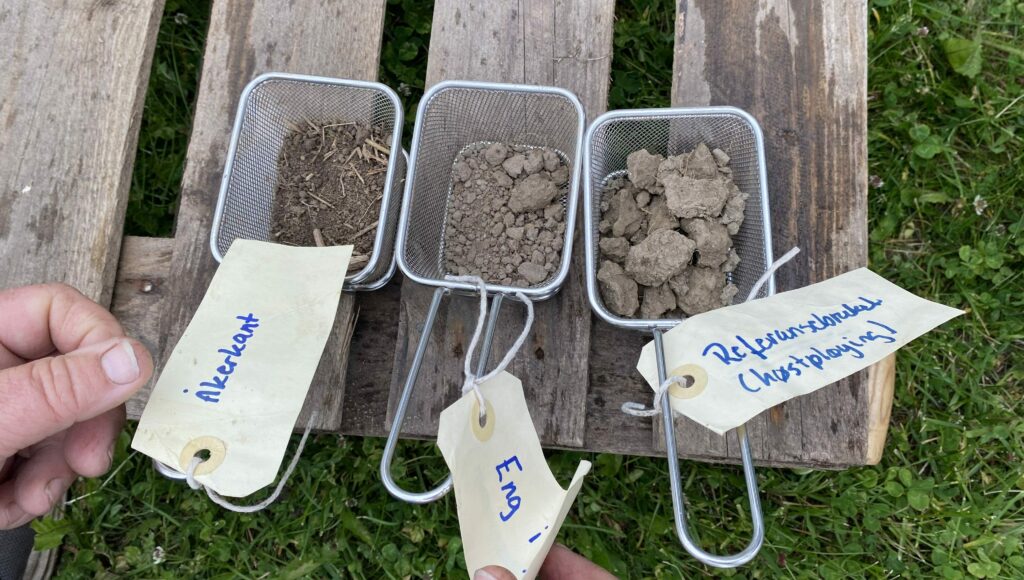
Collaboration for better soil-health in the Nordics
Researchers and advisors from Denmark, Finland, Norway and Sweden have shared knowledge and experiences on how to improve and sustain soil health in Nordic agricultural soils.
The project "Network– Sustain Nordic soil health" (NetSH) has focused on sharing low-tech methods for soil-health evaluation and improvement.
A soil health network

Coming out of the corona pandemic the first part of the project was digital, starting with a webinar “Soil health in the Nordic region” with 130 participants. As well as two online meetings and one on-soil workshop. In June 2022, 18 nordic researcher and advisers gathered at NIBIO Apselvoll in Norway. The Norwegian centre for organic agriculture (NORSØK) , The Norwegian Institute for Bioeconomy (NIBIO) and The Norwegian Extension Service (NLR) hosted the gathering that included teamwork, presentations, field demonstrations and discussions linked to soil heath evaluation and improvement. With a focus on soil-structure, aggregate stability and soil biology.
How to check your soil?
Four methods to evaluate soil health in the field were demonstrated in the workshop, including assessment of soil structure, soil compaction, root growth and soil biology. The most important tool was the spade to uncover the soil, followed by a visual assessment and checking the soil`s odor.
See links to national soil-health guides:
A combination of indicators enables the user to rank the soil health:
- Soil aggregates
- Root-growth and depth.
- Soil-compaction
- Nitrogen fixating root noodles on legumes
- The type and number of earthworms in the soil.
A healthy soil should be able to decompose organic matter relatively fast, and have a brown color reflecting a healthy organic matter content. It should also have a smell of different fungi, similar to the smell found in forest soils. All four methods focus on comparing soil samples visually to enable the farmer to assess soil structure, root growth, soil biology and soil health.

Compacted soil – a common Nordic problem
In the Nordic region the most severe soil problems tend to occur in vegetable and cereal production on clay soil. Drainage issues and soil structure problems are also found in grass-production. Much of this can be linked to soil compaction. In some cereal- and grass-fields the straw and plant residues decompose very slowly or not at all. In the Nordic region there is a wide range of soil types ranging from organic (peat) agricultural soils with more then 40 % soil organic matter to different mineral soils with low content of organic matter. In some areas the content of soil organic carbon is approaching a critical low limit of 1,5 %, which may impede critical soil functions.
A few strategies to improve soil health
Below you will find a selection of strategies to improve soil-health in the Nordic region discussed in the project.
Mineral soil
- How to improve soil biology? Input of plant residues and other organic matter, plant diversity, enough water and oxygen in the soil, increase the organic matter content if it is very low.
How to improve aggregate stability? Ley (grass/clover) in the crop rotation, green plants most of the year, use of animal manure and compost, and liming with burnt/slaked lime in clay soil.
How to improve soil structure? Not driving on wet soil, variety mixture of cover crops, sub crop in cereal and deep tillage + living plants.
- How to improve the decomposition rate of straw and plant residues in the soil? Cover crops, cut the material before incorporation, Check for drainage problems.
- How to loosen a hard ploughing pan? Crop rotation + loosening, alfa alfa 2 years and animal manure/sludge.
Peaty soil
- In organic (peat) soil used in agricultural production, the aim for the farmers should be to reduce the carbon loss, instead of trying to increase the carbon content.
The spade is your friend
The most accessible tool for the Nordic farmer is to use a spade to check the soil. To consider a more diverse crop rotation tends to be a start to improve soil health. Focus on soil structure and year around green plant-cover are useful strategies to meet a future with a more unstable climate, with more heavy rains and droughts.
